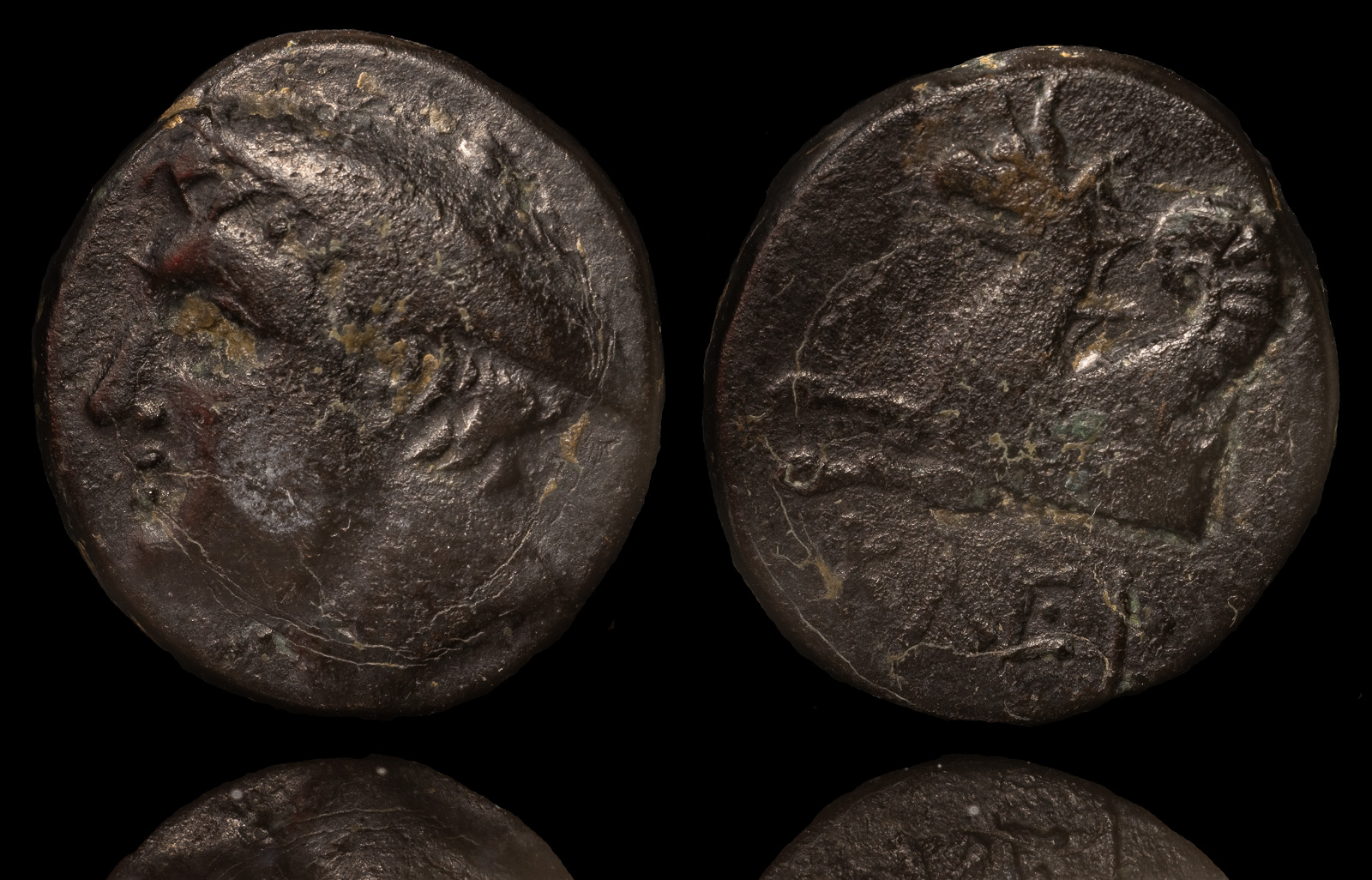
Ionia, Phokaia
Circa 350-300 BCE
Æ 5.52g, 18mm, 12h
Head of Hermes to left, wearing winged petasos fastened under chin
Forepart of griffin to left; [ΦΩ]KAEΩ[N] below.
BMC -, cf. 99-100; SNG von Aulock -; SNG Copenhagen -, cf. 1041-2.
Phokaia was a very powerful city, especially during the 6th and 5th centuries BCE, when it minted a number of electrum coins that became a standard currency throughout Greece.
According to Herodotus, they were the first to make long sea journeys and so impressed a king in Spain that he asked them to move to his kingdom, then gave them money to build a wall around their city when they politely declined.
Indeed, with two strong harbors, Phokaia was able to foster rich trading routes and established numerous colonies, including Amisos, Lampsakos, and others in Spain, France, and Corsica. During the Peloponnesian War, they started by paying tribute to Athens, but eventually rebelled and joined the Spartan cause.
During the time of Philip II, Phokaia attempted to take Kydonia in Crete, but was unsuccessful. After the death of Alexander the Great, Phokaia came under Seleukid control.
The griffin was the civic symbol of Phokaia and is believed to originate from the legendary Kodrid kings of Teos. It may also be due to settlers from Teos, which also used a griffin as its symbol.
Massalia is founded by settlers from Phokaia.
Carthage wins a significant victory against the Greek city of Phokaia near Corsica, marking the beginning of its rivalry with Greek settlements in the western Mediterranean.
Emporion is founded by settlers from Phokaia.
King Croesus of the Lydians conquers Ephesos and Phokaia.
With the downfall of the Kingdom of Lydia, Adramytteion, Parion, Phokaia, and Aigai go under the Persian Empire.
Elea in Italy is founded by settlers from Phokaia.
The Battle of Lade is fought between the Ionians under Dionysos of Phokaia and the Persians. Chios has the largest contingent, followed by Miletos, Lesbos (probably Mytilene), Samos, Teos, Priene, Erythrai, Myos, and Phokaia. Most fled during the battle, but the Chians put up a bold resistance before defeat.
The Battle of Lade is fought between the Ionians under Dionysos of Phokaia and the Persians. Chios has the largest contingent, followed by Miletos, Lesbos (probably Mytilene), Samos, Teos, Priene, Erythrai, Myos, and Phokaia. Most fled during the battle, but the Chians put up a bold resistance before defeat.
Peace of Kallias, an agreement between Athens and Persia after a series of conflicts between them. In Cyprus, Amathos, Kelenderis, and Salamis remain under Persian control but maintains its local autonomy. Ephesos, Miletos, Priene, Klazomenai, and Phokaia also obtain some autonomy.
Kydonia is besieged by Phalaikos and his mercenaries, aided by Phokaia. He is killed when lightning strikes a siege engine.